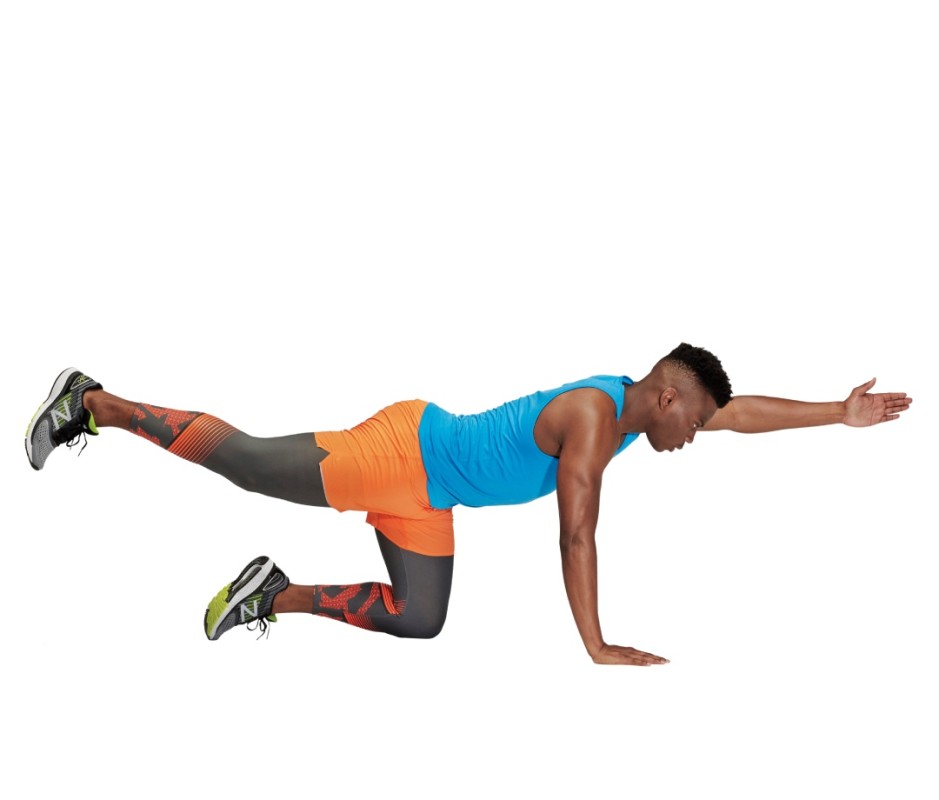With a solid eight hours of sleep under your belt, you're guaranteed to have a great start to your day...right? While a good night's sleep can do wonders for our brains and bodies, little to no movement for hours at a time can lead to stiff joints and unwanted aches and pains. While you don't have to perform an entire HIIT workout or pull out the kettlebells to rid your body of stiffness, a few simple morning exercises and stretches first thing can give you the boost you need to start your day.
Whether you frequent morning workout classes full of lower body movements and ab exercises or spend your time post-work hitting arms, chest, and shoulders, these moves can relieve any built-up tension and give you the flexibility needed to perform at your best. So, before you scroll through your email, hop on social media, and make your morning coffee, try slowly moving through a few of these morning exercises.
1. Bird Dog
Bird Dog
Justin Steele
Why You Should Do It
“Doing this simple exercise first thing in the morning will activate your full body, with a focus on the trunk and erector spinae [muscles and tendons running along your spine], which helps to build better posture,” explains Lesley Bell, a NASM-certified personal trainer based in Santa Monica, CA. It also increases lower-body stabilization throughout your day, making climbing stairs and even just walking feel easier and more efficient.
How to Do It
- To start, begin on the ground on all fours with your hands shoulder-width apart and your knees directly below your hips.
- Squeeze your glutes, draw your stomach in, and pull your shoulder blades down, all while keeping your head in line with your spine.
- As you hold this position, lift your right arm and left leg so that each is extended straight out.
- Bend your right arm and left leg, bringing your right elbow to your left knee.
- Hold this position for three seconds, then extend.
- That’s 1 rep.
- Do 10 reps, then repeat on the opposite side.
2. Cat-Cow
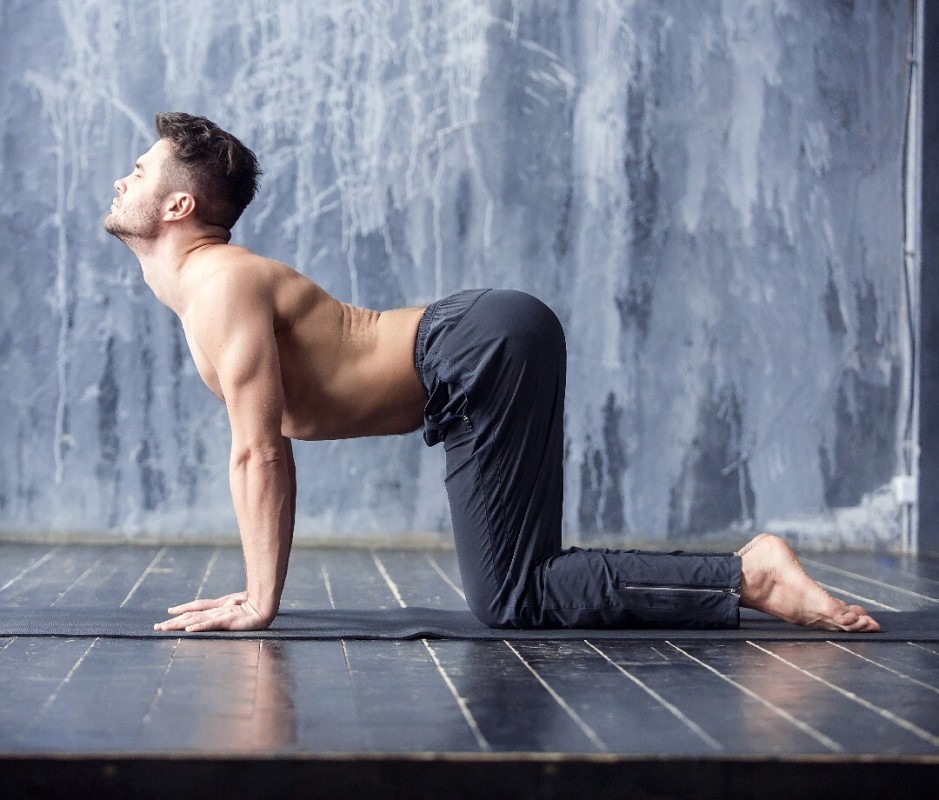
Cat-Cow Stretch
Getty Images
Why You Should Do It
If you’ve ever taken a yoga class, you know how good this move feels. “In the morning, this move is a great way to wake up every portion of the spine so it’s prepared for the activities you’ll perform during the day,” says Tim Hampton, a NASM-certified personal trainer at elevate Health & Performance in Philadelphia, PA.
How to Do It
- Start on your hands and knees with your hands directly below your shoulders and knees directly below hips.
- Inhale, dropping your chest as you push your hips and shoulder blades back into a “cow” position.
- Lift your chin and chest and gaze forward.
- To move into a “cat” position, exhale as you draw your belly button to your spine and round your back toward the ceiling like a cat. Return to the start position.
- That’s 1 rep.
- Complete 10 reps.
3. Y-Hold Into Handcuff Position
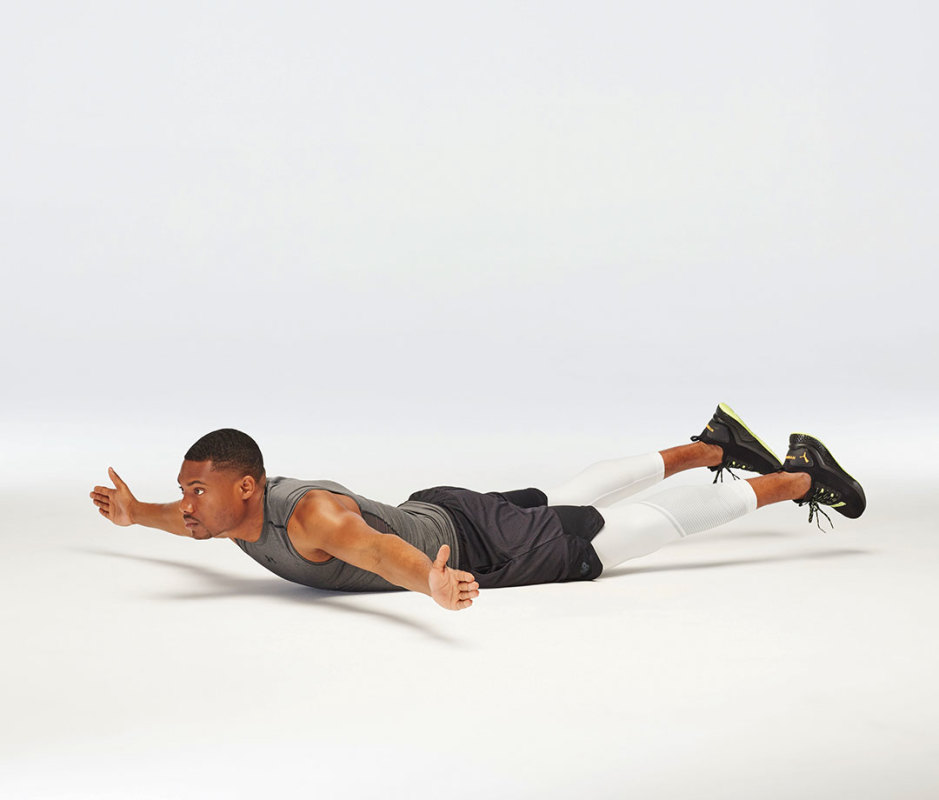
Y Hold Into Handcuff Position
Justin Steele
Why You Should Do It
“Most guys suffer from tight, shortened pecs and a weak upper back,” explains Adam Rosante, a trainer in New York City and author of The 30-Second Body. Sound familiar? “This move helps to mobilize the tissues in the front of the body and activate the postural muscles in your upper back,” so you can stand taller all day long.
How to Do It
- Begin by lying facedown on the ground with your arms overhead in a Y position.
- Squeeze the muscles in your upper back and raise your arms and chest off the floor.
- Hold for 10 to 15 seconds before sweeping your arms down and behind your lower back (as if you were being handcuffed).
- Clasp one hand over the opposite wrist and squeeze your shoulder blades together for 1 second.
- That’s 1 rep.
- Do 3 to 5 reps, alternating hand clasp.
Pro Tip
When you begin the movement, keep your thumbs up to target your shoulders more.
4. Glute Bridge
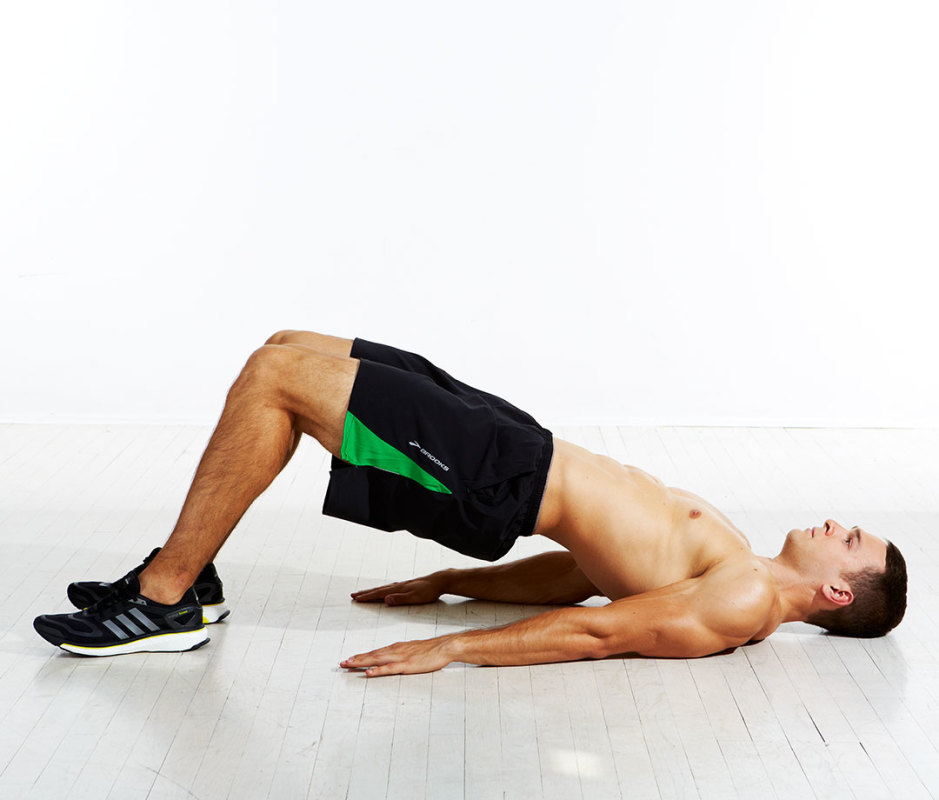
Glute Bridge
Beth Bischoff
Why You Should Do It
Thanks to today’s prevalence of desk jobs, “the majority of people have a weak posterior chain (hamstrings, glutes, and lower back),” says Bell. “Activating these muscles right away can help prevent common ailments like low back pain, hamstring pulls, and bad posture—plus, it'll help open up tight hip flexors from sitting all day.”
How to Do It
- Start by lying on your back with your knees bent and your feet flat on the ground about shoulder-width apart near your butt.
- Push your heels down into the ground while raising your hips off the ground.
- When you reach the top, squeeze your glutes while keeping your abs tight.
- Make sure the shins are vertical, then lower your hips back down to their original position.
- That’s 1 rep.
- Complete 20 reps.
Pro Tip
It’s important to keep your abdominal muscles tight during this movement to help maintain a neutral spinal and prevent lower back pain.
5. Deadbug
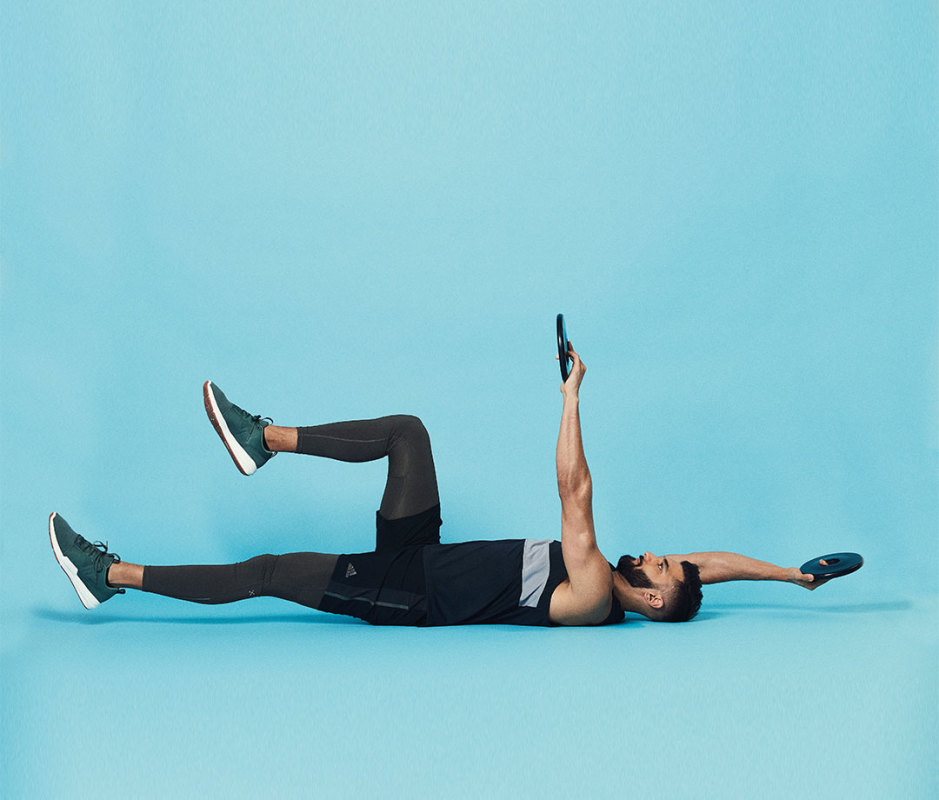
Deadbug
James Farrell
Why You Should Do It
"Your core is literally responsible for keeping you upright all day. So in the same way mobilizing your spine preps your body for movement, activating your core first thing in the morning can help reduce pain and injury from daily activities," says Hampton.
How to Do It
- Begin the movement by lying on your back with your hips and knees bent at a 90-degree angle.
- Raise your arms to the ceiling, brace your abs, and flatten your lower back into the floor.
- Reach one hand behind your head while extending the opposite leg, letting it hover just above the floor.
- Reverse the motion and repeat on the opposite side.
- That’s 1 rep.
- Do 10 reps on each side.
6. Quadruped Rotation
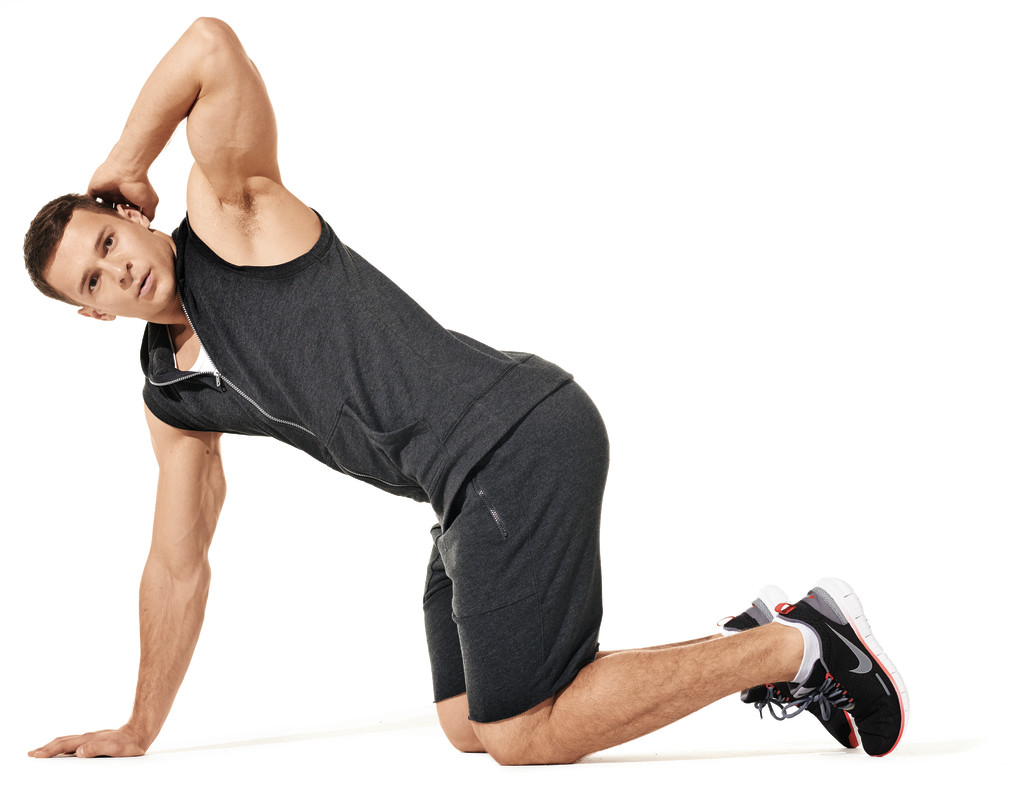
Quadruped Rotation
James Michelfelder & Therese Sommerseth
Why You Should Do It
“This is a really simple move to open up your thoracic spine,” says Rosante. That’s especially important for improving posture, reducing pain, and negating some of the effects of sitting at a desk all day.
How to Do It
- Start on your hands and knees with your hands directly below your shoulders and knees directly below your hips.
- Lightly place one hand on your upper back or back of your neck and begin to rotate as far as possible toward the hand on the floor.
- Reverse, rotating upwards as far as possible before returning to your center.
- That’s 1 rep.
- Do 5 reps on each side.
Pro Tip
Keep your spine in a neutral position throughout the entirety of the exercise to avoid arching, which can lead to back discomfort.
7. Plank
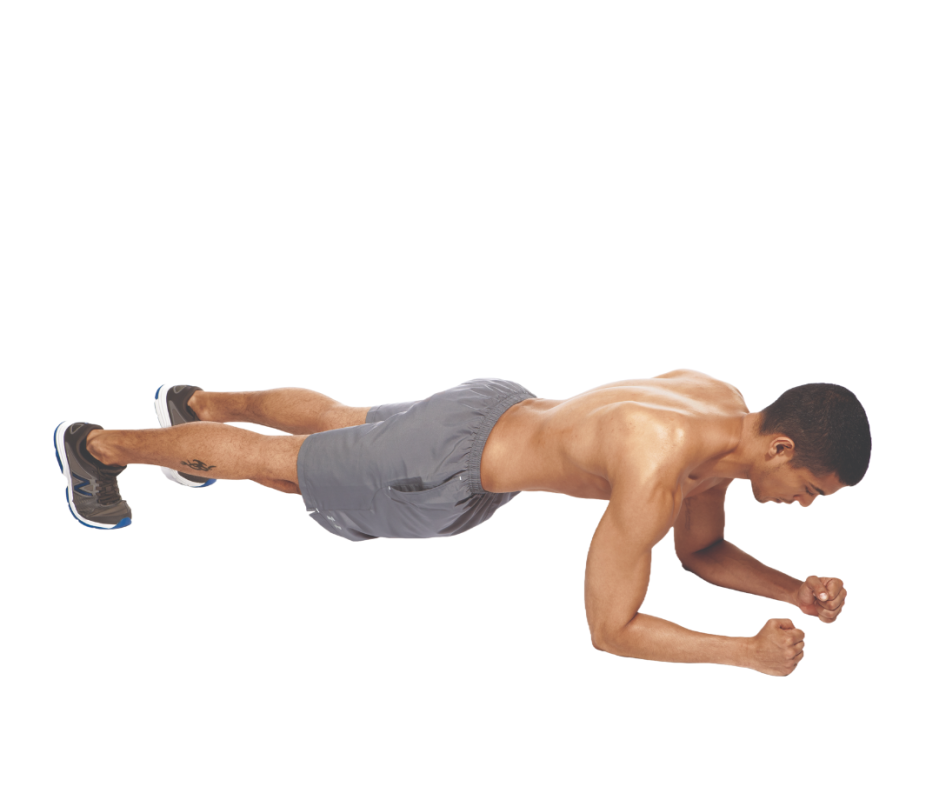
Plank
Beth Bishoff
Why You Should Do It
If you’re doing it right, a plank is a total-body move. “Holding this position will activate all of your core muscles that are essential for a strong posture,” says Bell. “This, in turn, will help take pressure off your spine and hips throughout the day.”
How to Do It
- On a flat surface, begin on your hands and knees.
- Place your hands directly under your shoulders and step your feet back.
- Maintain a straight line from your heels through the top of your head, looking down at the floor, with your gaze slightly in front of your face.
- Squeeze your abs, quads, and glutes.
- Hold for at least a full minute.
8. Reverse Lunge With Torso Twist
Why You Should Do It
Tight hips and ankles are another common problem area, says Rosante. “This lunge variation helps to mobilize both while also waking up the body's rotational movement pattern,” he explains. “The overall intention is to mobilize and activate, setting your body up for a day of better movement.”
How to Do It
- Starting in a standing position, step back into a reverse lunge until your knee almost touches the floor.
- At the bottom, reach your arms to the sky and twist your torso toward your front leg.
- Return to center before driving through the heel to push back to stand. Repeat on the opposite side.
- That’s 1 rep.
- Do 5 reps on each side.
9. Downward Dog
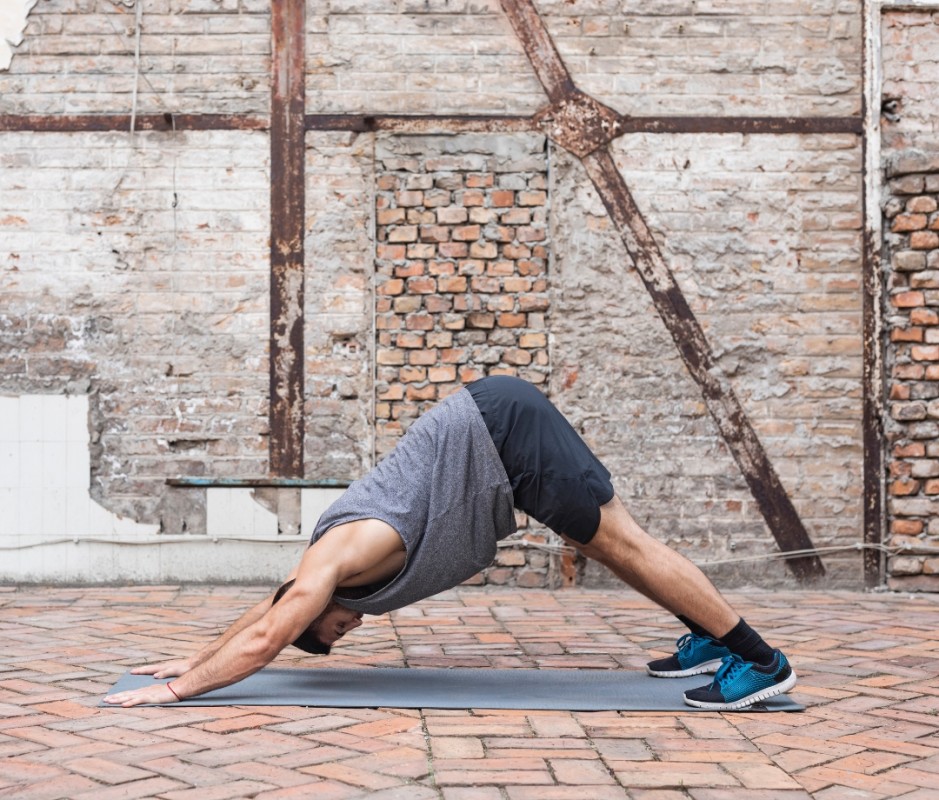
Downward Facing Dog
FreshSplash/ Getty
Why You Should Do It
“Some benefits of the downward dog pose include improved circulation throughout the body, elongated spine, and strengthened hands and wrists,” says NASM certified personal trainer Allen Swan. “[It can also] help alleviate tension and stress accumulated throughout daily activity or fitness activities.”
How to Do It
- To begin, start in a tabletop position with your palms on the ground with your hands and knees hip-distance apart.
- Walk your palms out to be in line with your shoulders.
- Next, raise your body in the air with your palms pushing into the ground.
- Then shift your stomach towards your thighs while raising your hips.
- As your legs begin to straighten, keep your toes pointed forward and adjust to have a slight bend in your knees.
- Hold, then return to the start position.
- That’s 1 rep.
10. Forward Fold

Forward Fold Stretch
NicolasMcComber/Getty
How to Do It
- To initiate the forward fold, stand tall and take a deep breath in and out before lifting your arms overhead.
- Bend your knees slightly and fold your torso over your legs, hinging at your hips.
- Let your head hang and take a few deep breaths in and out to lengthen your spine.
- Bend your knees slightly and slowly begin to roll back up to a standing position.
- That’s 1 rep.
Why Is It Important to Stretch in the Morning?
Any morning gym goer knows that morning movement is key to loosening tight muscles and boosting energy levels. But you don’t have to get a full workout in to reap the benefits. According to Swan, a few simple stretches or exercises are enough to “improve flexibility and circulation from sleeping, and prepare us for our daily movements and tasks without injury.”
Does Stretching in the Morning Boost Metabolism?
While the science proving stretching in the morning can boost metabolism is inconclusive, a recent study in the journal Proceedings of the National Academy of Sciences (PNAS) showed that mice that exercised late in the morning could more effectively boost metabolism than those who participated in late evening movement.
“Stretching promotes blood flow to targeted muscles which can help increase energy expenditure and temporarily heat your muscles to burn more calories passively over time,” says Swan.

